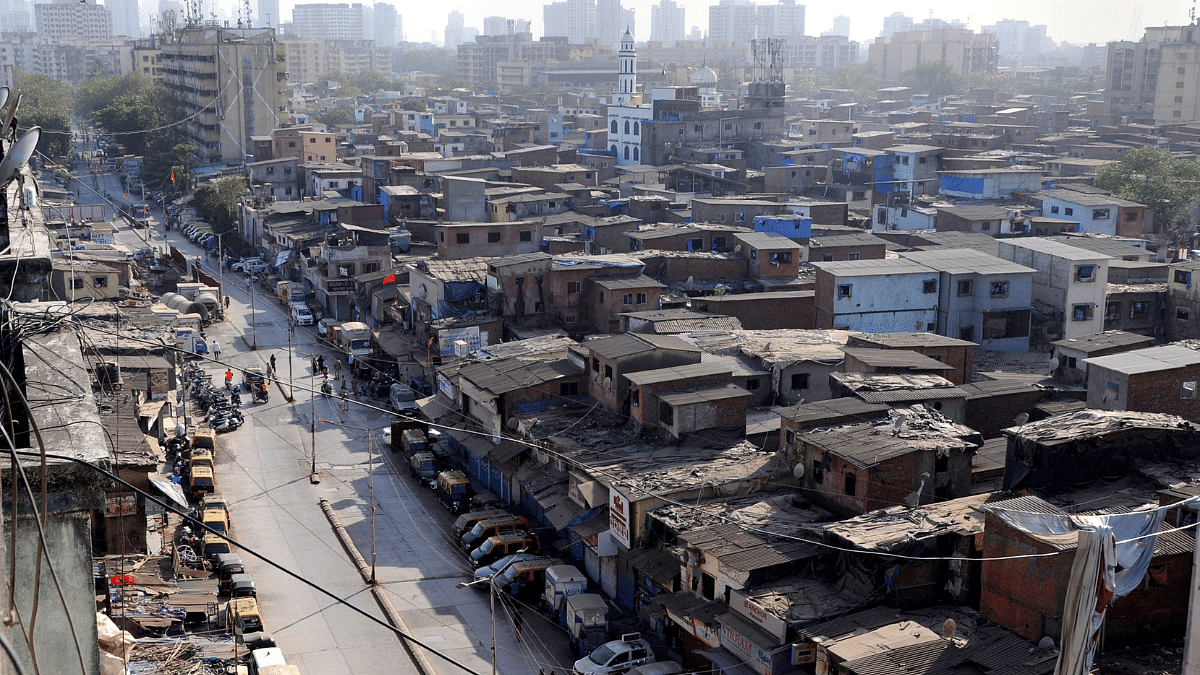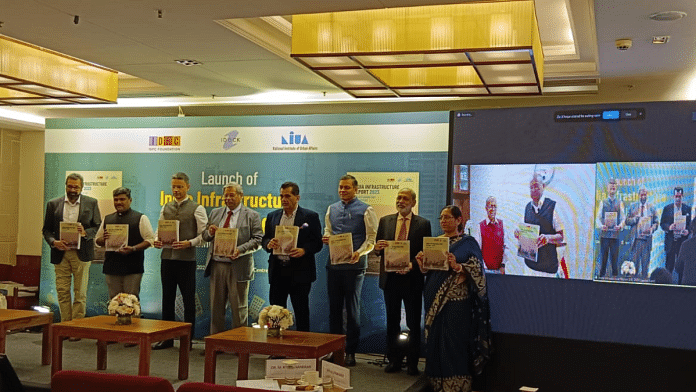New Delhi: Flawed urban planning and development-control norms are among the drivers of urban sprawl in the country, suggests the India Infrastructure Report 2023 (IIR 2023), adding that rural migration is putting more pressure on infrastructure.
The report on urban planning and development is a joint effort of the Infrastructure Development Finance Company (IDFC) Foundation, a developmental finance institution, Infrastructure Development Corporation (Karnataka) Ltd (iDeCK), a consulting firm formed as a joint venture between the Karnataka government, IDFC Foundation and Housing Development Finance Corporation Limited (HDFC), and the National Institute of Urban Affairs (NIUA), an urban development and management think tank.
Titled ‘India Infrastructure Report 2023 on Urban Planning and Development’, the report was released in Delhi Monday by former vice-president M. Venkaiah Naidu, who has earlier served as Union urban development minister.
The report, which seeks to highlight issues of infrastructure planning, design, implementation, finance and governance, aims to draw stakeholders’ attention to the “need to place urban planning and governance at the core of development agendas”.
The report analyses the urban challenges in Indian cities and criticises the planning mechanism, especially certain restrictions on the construction of buildings, for making cities “unlivable”. It says that slums in cities are a result of poor planning.
The report focuses on seven themes with respect to urban challenges: Planning and governance, smart initiatives, public private partnership and financing development projects, housing and migration, public service delivery, integrating infrastructure, and urban redevelopment.
It stresses the need for ‘transit-oriented development’ in cities for planned growth. The report also analyses the financial management of urban local bodies and how there is a need to focus on their financial sustainability.
Naidu, who attended the event virtually, said the report “raises complex issues and provides solutions to make Indian cities sustainable”.
“Sustainability is not just a buzzword. It is the need of the hour to save this planet from complete destruction. This report lays the roadmap of how to improve the existing cities through urban redevelopment,” he added. “The underlying purpose is to provide better urban development… the objective is to contribute to nation-building and provide a concrete and implementable plan for growth.”
Former NITI Aayog CEO and India’s G20 Sherpa Amitabh Kant said in his keynote address that “vertical growth of cities” and “planning for sustainable urbanisation is the way forward”.
“Almost half of our 4,000-plus statutory towns are expanding in an unplanned, unscientific manner without any master plan to guide their growth,” he added.
NIUA director Debolina Kundu said the report had “come out at a very opportune time”.
“The report gives a very detailed diagnosis of urban India and shows the way forward for building inclusive and sustainable cities,” he added.
Also Read: Gati Shakti Mission shows way for infra planning, states make full use of digital mapping
Low floor space and urban sprawl
One of the chapters in the report highlights that low floor space indices (FSIs) or floor area ratios (FARs) — the ratio of built-up space on a plot to the total area — are among the main reasons for high-density development and urban sprawl.
FSI varies from city to city depending on the respective development-control norms. The report states that low FSI results in the creation of slums.
Authored by Sebastian Morris, senior professor at Goa Institute of Management and editor of the IIR 2023, the chapter says “high density is forced upon people by design and planning errors”.
“Low FSIs, little land being ‘released’ for urban habitats, extreme inequity in access to land, and very lavish use of land by governments and the powerful are the true reasons (for high population density),” Morris says in the chapter, titled ‘Governance and planning challenges for Indian cities’.
The report states that the percentage of the urban population living in slums — estimated at 49 percent in 2020 — continues to be high.
The figure, it adds, is much lower in other countries: “Thailand had a mere 7 percent, Brazil with its high-income inequality (15 percent); Cambodia (40 percent), Laos (22 percent), Nepal (34 percent), which are much poorer than India.”
“Only in relation to Pakistan (56 percent) can our planners and city governments take any comfort,” it adds.
The report says that, due to low FSI, the cost per unit of built-up space in cities has increased.
“Illegal settlements on encroached public lands (incentivised by the cost of floor space) and public spaces, like footpaths, and sides of walls, contribute further to increase the population density. Institutional areas, government (space) and central gardens are lavishly provided with land and built at low densities,” it says.
The report cites the example of Mumbai, which has a large population living in slums. Referring to past studies, the report highlights that the low FSI in Mumbai has resulted in a very low per capita floor space usage in the city and a large proportion of its population living in slums.
In his address, Kant was also critical of a planning approach that restricts FSI, and stressed the need for vertical development of cities.
“Recent examples have demonstrated that densification will actually benefit us much greater. We have had very restricted FSI, it was kept very low and this has created distortion in the land market and it has impacted urban planning. It has pushed development to peri-urban areas… keeping FSI artificially low to control densities is a very failed fallacy.”
Kant said that cities need to be built dynamically and “the carrying capacity needs to be increased in tandem with their growth”.

Also Read: How diaspora can help fund India’s infrastructure needs — ‘patriotic discount on bonds, remittances’
‘Radical reforms needed in planning process’
With rampant unauthorised construction and expansion of slums in cities, the report stresses on bringing “radical” changes in urban planning. It points to the need for integrating transport planning with area planning.
“Radical reforms are required in the planning process. Development, master (land use) and transport planning ought to be integrated to develop a spatial and infrastructure plan with emphasis on transport,” the report suggests.
The report cites the example of Ahmedabad, which has benefited from the decision to change its planning approach.
In 2002, the Ahmedabad Municipal Corporation decided to do away with its highly restrictive FSI. The urban local body began to release a lot more land for urbanisation.
“The city, too, was helped much by the use of the TP (Town Planning Scheme) — a method of land-pooling with embedded fairness — that allowed Ahmedabad to easily convert land for urbanisation with a certain degree of real infrastructure and land-use planning that was realistic,” the report added.
This freed Ahmedabad from the “’land constraint’ that nearly all larger cities in India face”, the report says.
It also advocates for cities to have a redevelopment policy. “An essential element of public redevelopment is to recover land from private owners in exchange for higher FSI and better road connectivity.”
(Edited by Richa Mishra)
Also Read: With its infra crumbling & green cover eroding, Bengaluru may vote over same issues in elections



